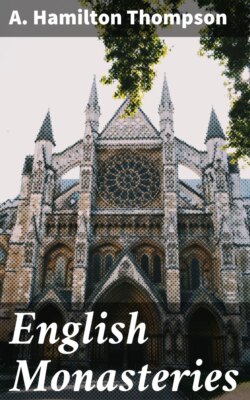Читать книгу English Monasteries - A. Hamilton Thompson - Страница 24
На сайте Литреса книга снята с продажи.
§ 21.
ОглавлениеTable of Contents
After the beginning of the fourteenth century the foundation of monasteries practically ceased, although the Carthusian order at a later date enjoyed some popularity, which was enhanced by royal patronage. Religious houses no longer afforded the only career possible to those who were unfitted for the limited professions open to the medieval layman. With the growth of a well-to-do middle class came the tendency to devote benefactions which at an earlier date would have been given to monasteries to parish churches. From the reign of Edward II onwards chantries and colleges of chantry-priests in parish churches were founded in great numbers. In one respect, however, the regular life kept in touch with national progress. The orders of friars found their way to England in the thirteenth century. In 1221 Dominicans (Friars preachers or black friars) settled at Oxford: about 1224 houses of Franciscans (Friars minor or grey friars) were established at Canterbury and London: Hulne priory in Northumberland and Aylesford priory in Kent were founded for Carmelites (white friars) about 1240: Clare priory in Suffolk was founded for the order known later as Austin friars in 1248. Of the lesser orders the most important was the Trinitarian, whose most famous house was St. Robert's at Knaresborough. Although the general plan of a friary was similar to that of a monastery, the lives of monks and friars were totally different. The friar was a wanderer who lived on alms: his circuit was bounded by a special province, and he was not confined to the limits of a single house. The favourite places for friaries were thus the larger towns. No less than seven houses of friars were founded in Cambridge: there were six each in London and Oxford: Bristol, Lincoln, Lynn, Newcastle, Northampton, Norwich, Stamford, Winchester and York contained houses of all the four chief orders. An order of nuns, known as the Poor Clares from their foundress St. Clare, was an off-shoot of the Franciscan order, and had five houses in England. The influence gained by these new bodies served to turn popular attention from the older orders. Not merely were the friars the revivalist preachers of the age, in antagonism to the conservative spirit of the monks and secular clergy[3]; but the great learning of many of their leading members earned them distinction and no little weight in the universities of Europe. The moral dangers of their life, their independence of episcopal control and their unchecked influence among the common people brought about an early decline from the ideals of their founders; but their achievements during the first century of their existence are one of the most remarkable episodes in religious history.
